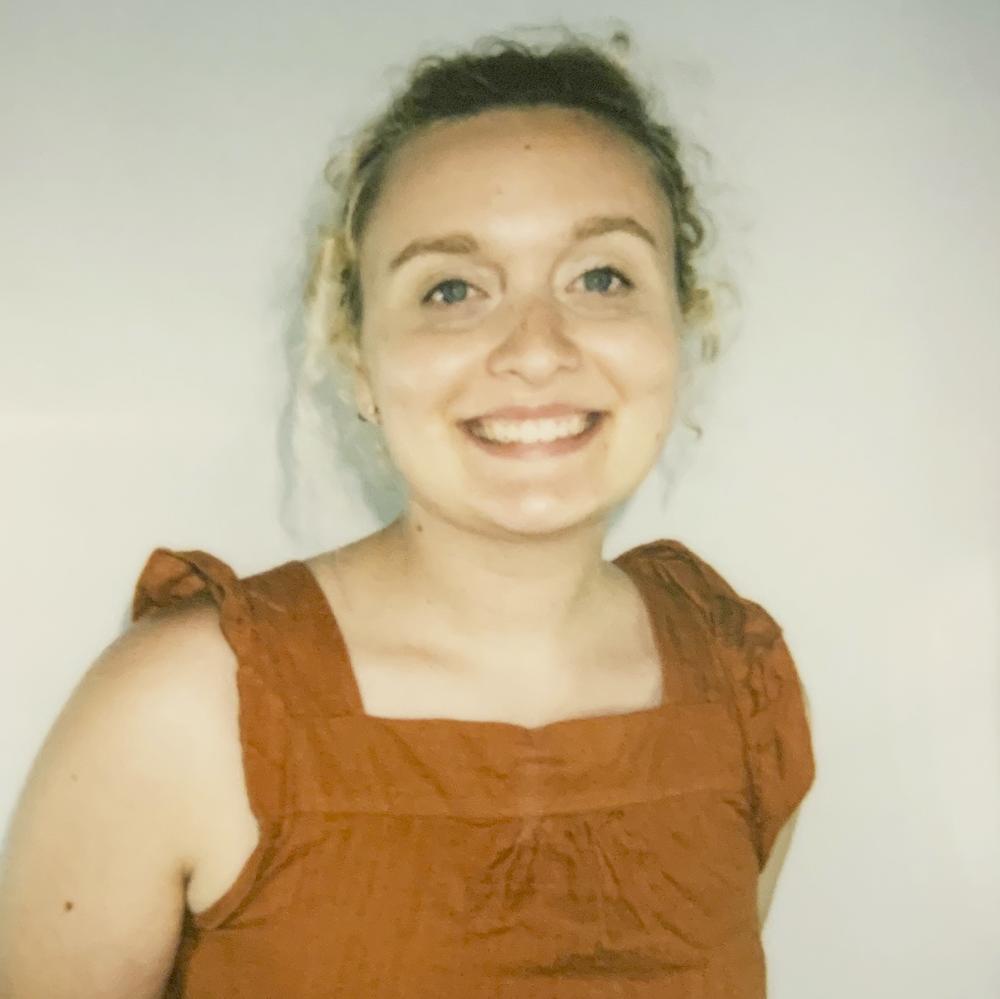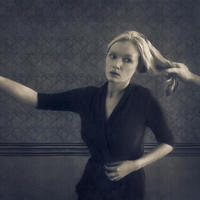More about Emma Powell
Works by Emma Powell

Adjunct Instructor, Forsyth Technical Community College
Are we dreaming or just looking at Emma Powell’s art?
Emma Powell’s work is like seeing the moment you wake up from a bizarre and fantastic dream. Using her dreams as inspiration, Powell creates photographs using alternative processes to explore her waking questions. She is inspired by artists like Sally Mann who use historic photographic processes, as well as nineteenth-century spirit photography and Surrealism. Powell’s use of historic and alternative photographic processes like cyanotype, palladium and pigment, and wet plate collodion give the already peculiar images an ethereal quality. The cyanotype process uses light sensitive iron salt solutions to create blue hued images. The stronger the light hits, the deeper the blue. She then often tones the prints by hand with tannins from wine, tea, and coffee, creating different shades and hues of blue. These tones give an otherworldly view of Powell’s images with no legible time or place.
In her series In Search of Sleep, Powell uses stories her father would tell to get her to fall asleep as a child as inspiration. The stories hover between waking life, existential terrors, and imagination. Using self-portraiture, Powell stages and enacts the scenarios for her artworks. She calls the series a “visual lullaby” that explores her subconscious, straddling waking life and the dreamworld.
The daughter of a photographer father and photo-historian mother, Powell studied studio art the College of Wooster in Ohio and went on to receive her MFA from Rochester Institute of Technology in 2010. Since then, she has taught many workshops in her craft. She created a series focused on the life of inventor of Kodak, George Eastman, using viewfinders of old cameras and experimental materials to document the visuals. Powell shares her alternative process knowledge with her students at Colorado College and Penland School of Craft. Powell continues to create dream- and nightmare-like sequences with experimental processes today.
Sources
- Powell, Emma. "Emma Powell Photography." 2014. Accessed December 15, 2021. https://www.emmapowell.photo/
- "Emma Powell." Alternative Photography. September 2, 2017. https://www.alternativephotography.com/emma-powell/
- "Emma Powell." Artsy. Accessed December 15, 2021. https://www.artsy.net/artist/emma-powell
- Limsmith, Katrine. "Q&A: Emma Powell discusses traditional photography technique, new exhibit." The Daily Nebraskan. September 6, 2013. http://www.dailynebraskan.com/culture/q-a-emma-powell-discusses-traditi…










